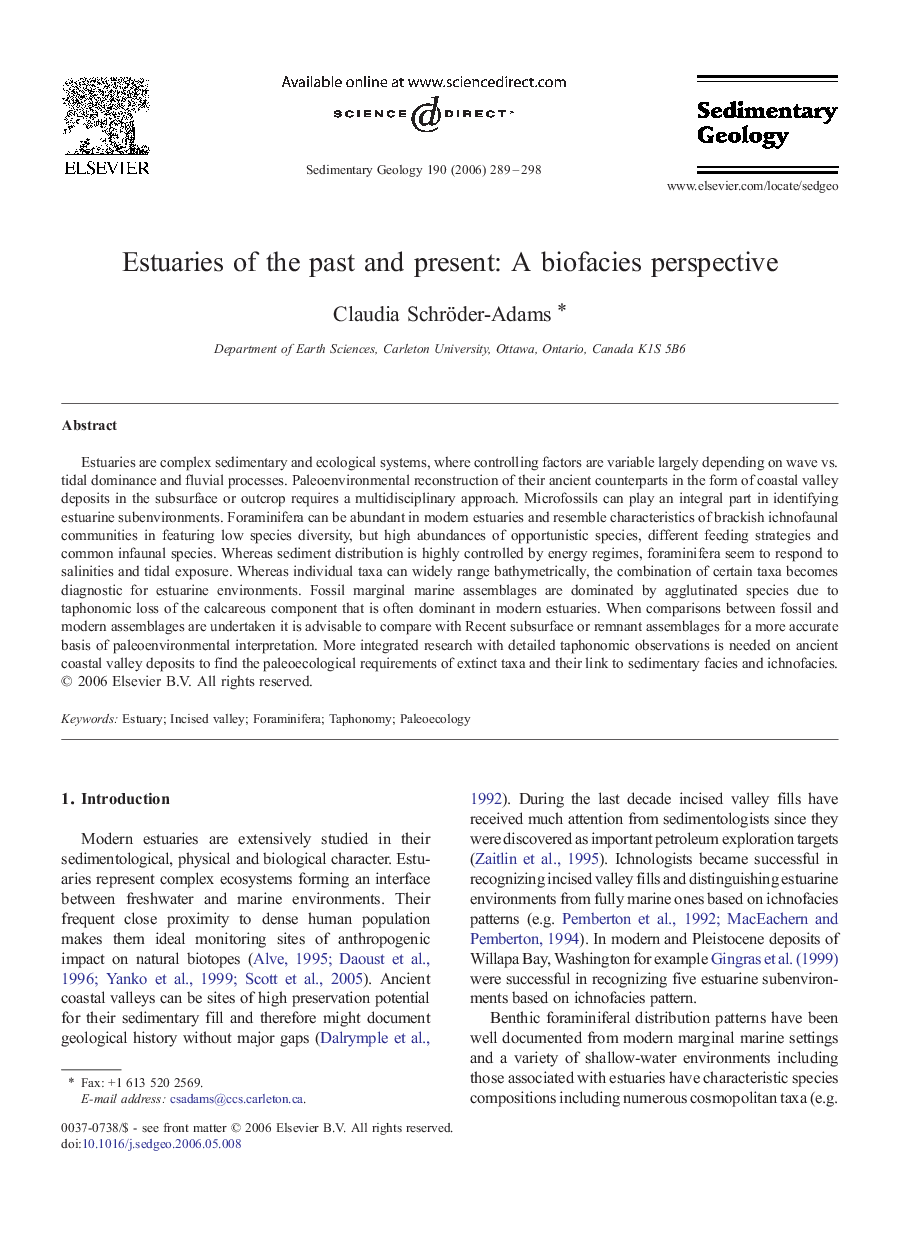| Article ID | Journal | Published Year | Pages | File Type |
|---|---|---|---|---|
| 4690979 | Sedimentary Geology | 2006 | 10 Pages |
Abstract
Estuaries are complex sedimentary and ecological systems, where controlling factors are variable largely depending on wave vs. tidal dominance and fluvial processes. Paleoenvironmental reconstruction of their ancient counterparts in the form of coastal valley deposits in the subsurface or outcrop requires a multidisciplinary approach. Microfossils can play an integral part in identifying estuarine subenvironments. Foraminifera can be abundant in modern estuaries and resemble characteristics of brackish ichnofaunal communities in featuring low species diversity, but high abundances of opportunistic species, different feeding strategies and common infaunal species. Whereas sediment distribution is highly controlled by energy regimes, foraminifera seem to respond to salinities and tidal exposure. Whereas individual taxa can widely range bathymetrically, the combination of certain taxa becomes diagnostic for estuarine environments. Fossil marginal marine assemblages are dominated by agglutinated species due to taphonomic loss of the calcareous component that is often dominant in modern estuaries. When comparisons between fossil and modern assemblages are undertaken it is advisable to compare with Recent subsurface or remnant assemblages for a more accurate basis of paleoenvironmental interpretation. More integrated research with detailed taphonomic observations is needed on ancient coastal valley deposits to find the paleoecological requirements of extinct taxa and their link to sedimentary facies and ichnofacies.
Related Topics
Physical Sciences and Engineering
Earth and Planetary Sciences
Earth-Surface Processes
Authors
Claudia Schröder-Adams,
